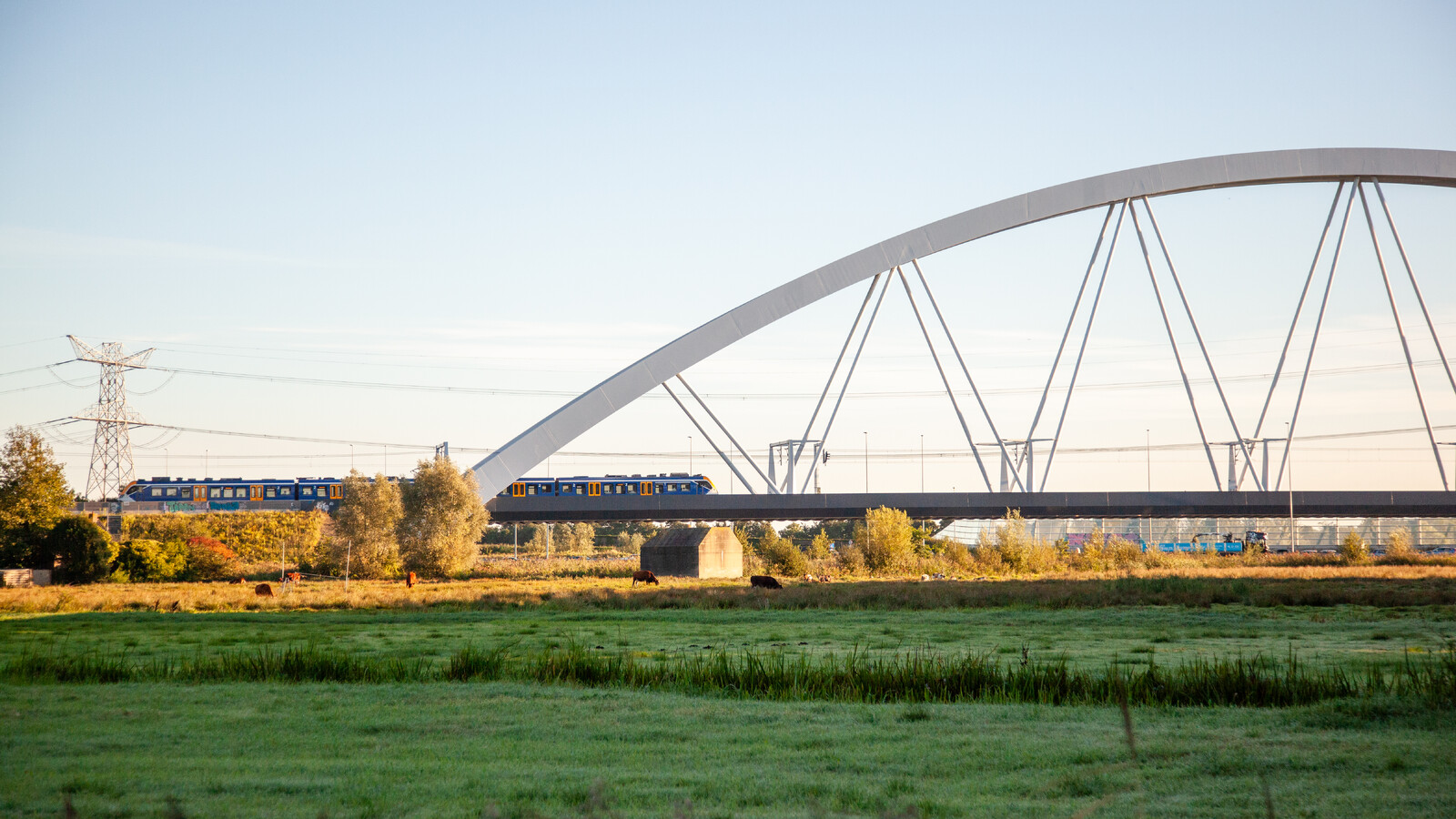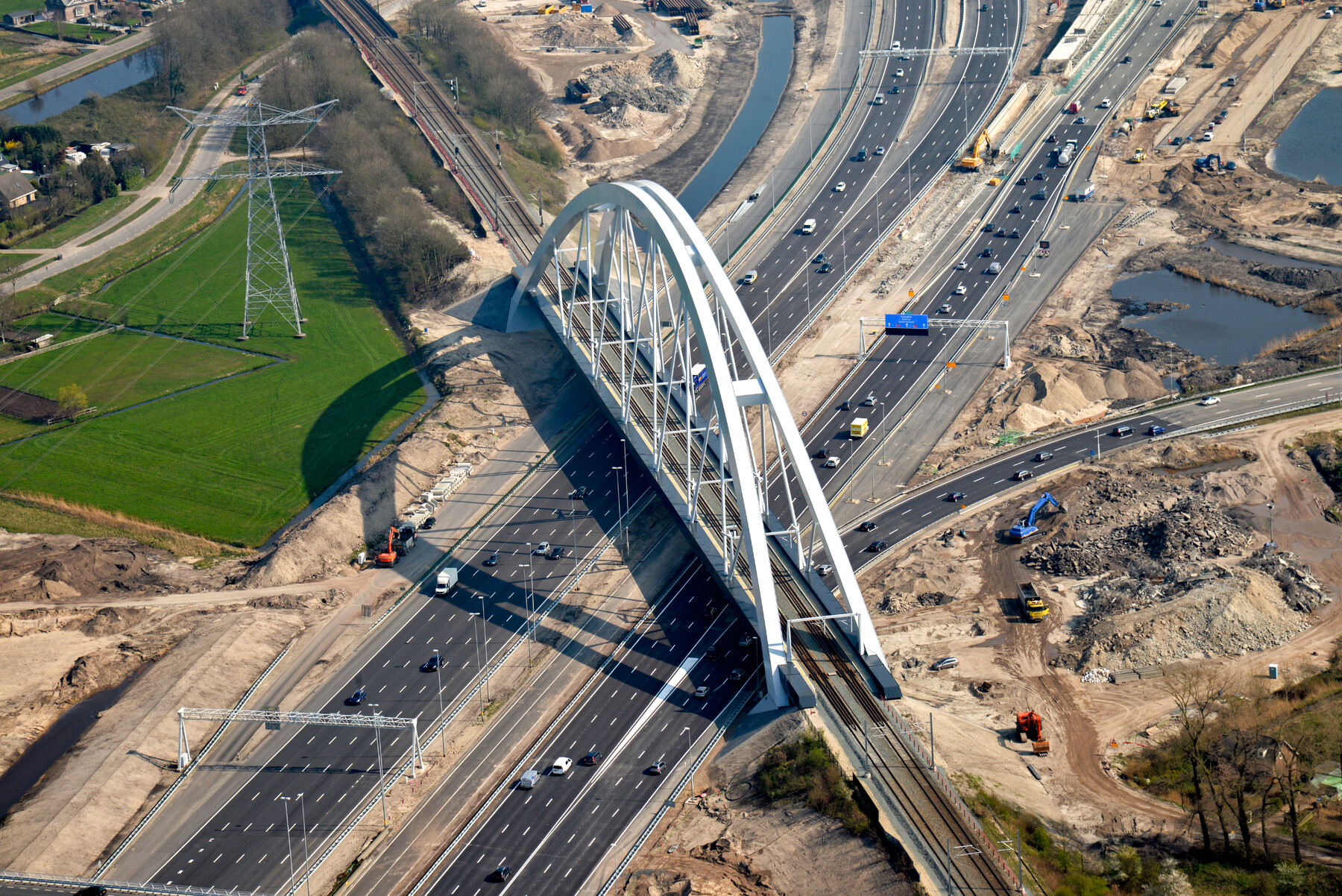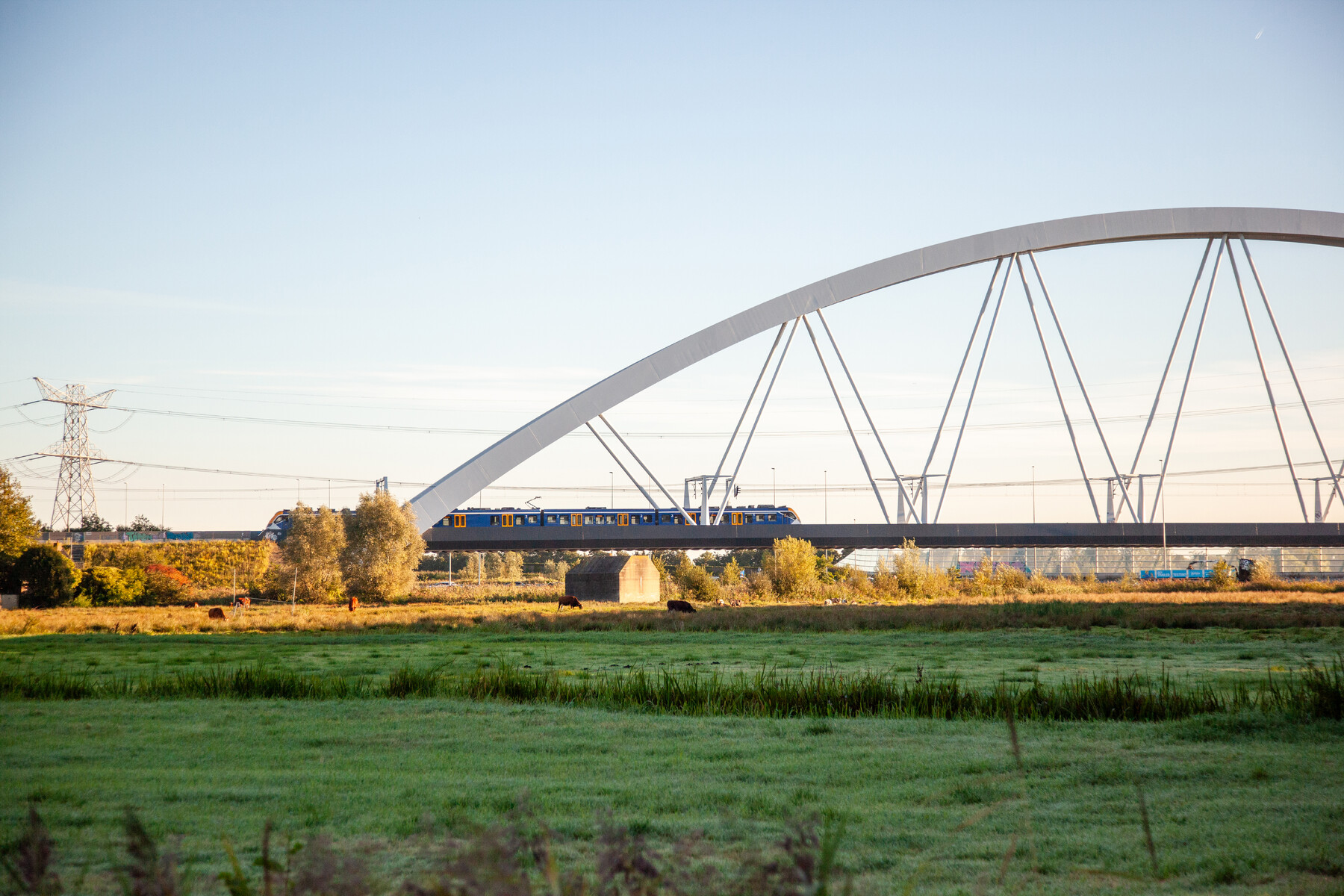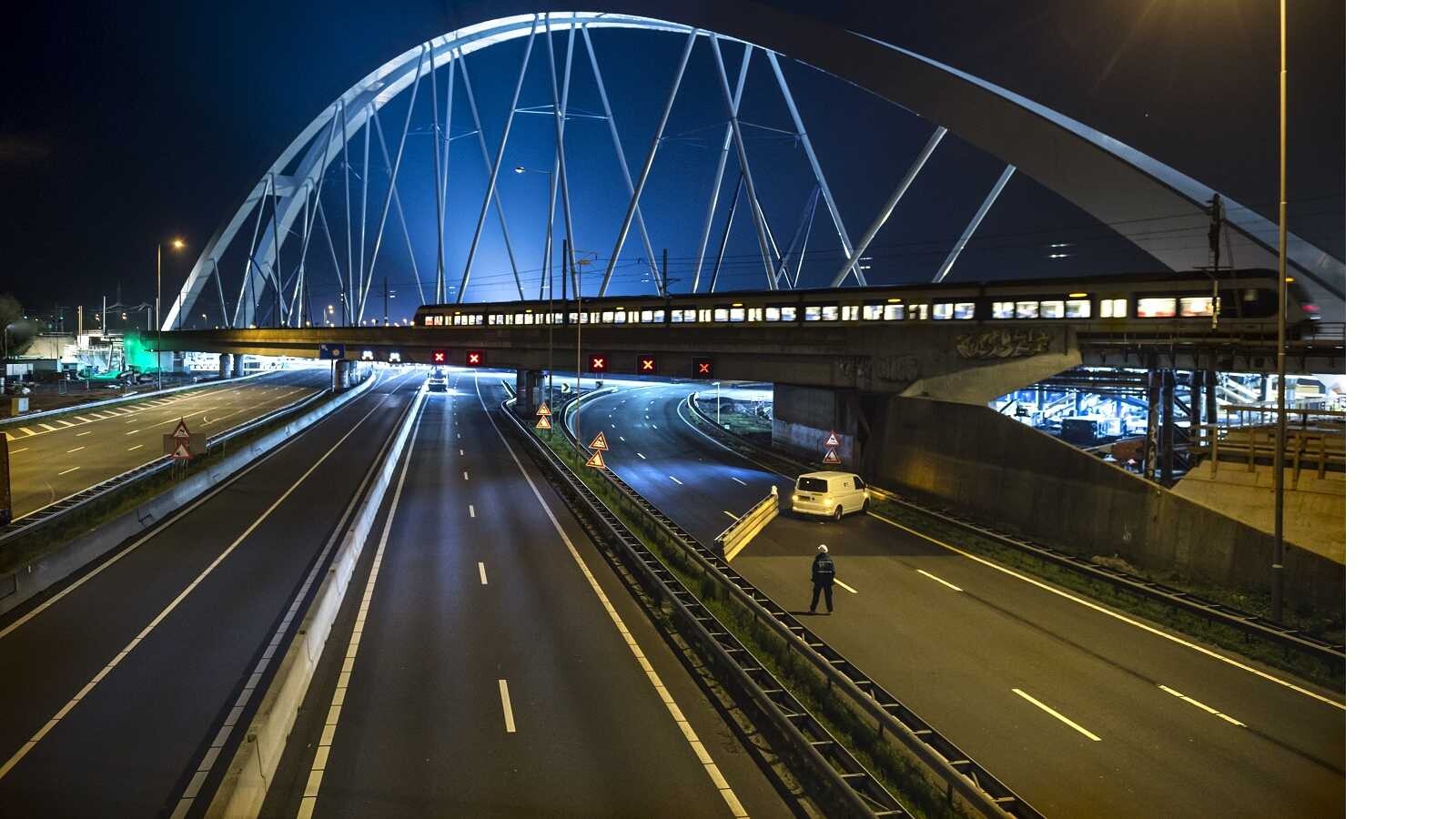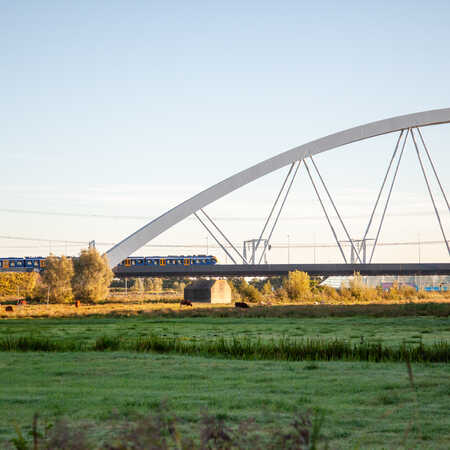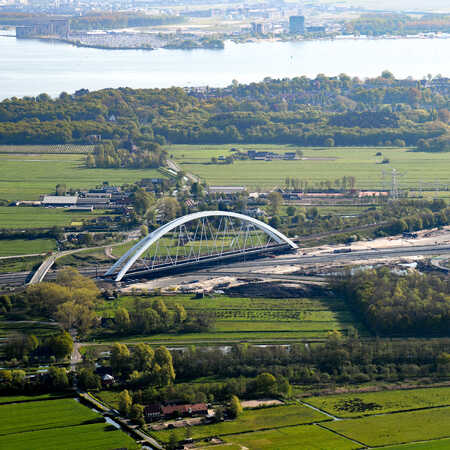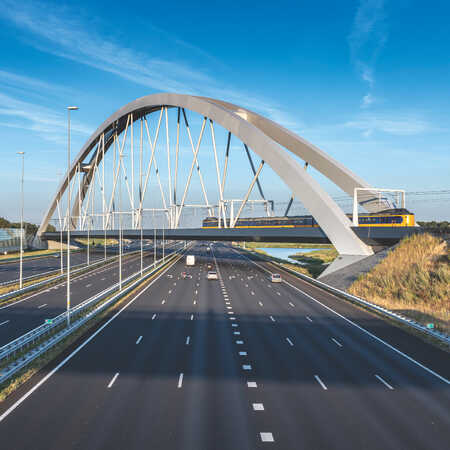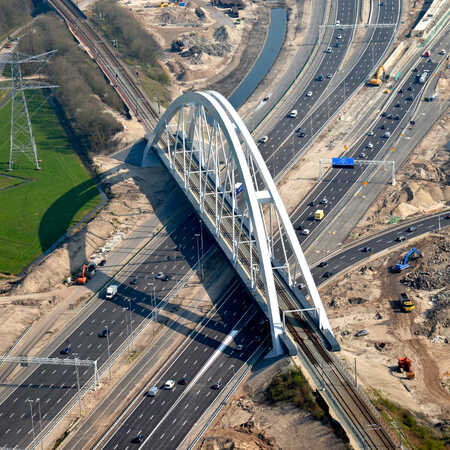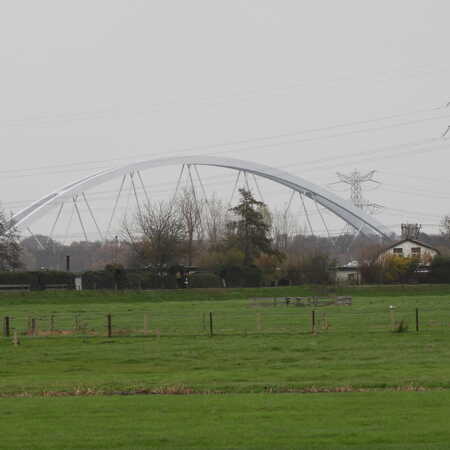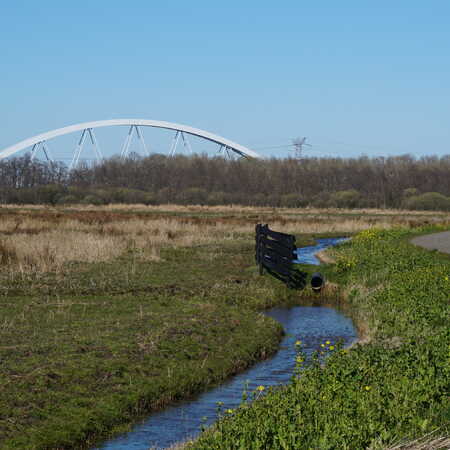The two arches do not meet, the tubular hangers are tilted and with their light colors those steel surfaces reflect the light, making the bridge appear even more slender. The connections between arches and deck are not vertical but diagonal, making the bridge stronger, but also offering a more lively view from a passing car. The portals supporting the electrical wires over the train track are designed so that their shape, size and color is integrated into the bridge, where they seem to disappear. Their connection to the diagonals is used in a way to absorb and dampen tremors caused by the trains and the influence of the wind. The portals and diagonals are slender enough not to hinder the view of train passengers as they shoot past high above the stream of traffic.
Hidden engineering
It takes quite a lot to make this bridge feasible, as clear and self-contained as it may look. To harmonize weight, strength and dimensions and to ensure that they meet the strict requirements for a railway bridge, a special type of steel was used, known as S460 or high-strength-steel. The remarkably slender bridge deck consists of both steel and a specialized quick drying concrete and has a sound dampening bed of ballast. In order to preserve the bridge’s slim silhouette there are only a few connections between the arches and most constructive elements are taken out of view.
The Zandhazen Bridge is full of innovative design. An example of this is the connection between the arches and the bridge deck. The arches are tilted and not straight and moreover are even curved. The effects on the distribution of forces in the bridge are quite complex, which required the design of an internal system of steel partitioning in the arches. All this remains invisible from the outside, when passing the bridge you see only a tight fit between the steel surfaces.
A spectacular building process
Because of the location so close to the motorway A1, there was little space to assemble the bridge on site. This steel colossus is built from a total of 242 parts, a few of which weigh up to 120 tons. These arrived over water by barge, near the Holland Bridge. All the other parts were transported on huge flatbed trailers.
Once the bridge was assembled it stood some 400 meters from the location where it would be part of the Flevo railway line. What happened next can rightly be called something unique in Dutch building history. Across a custom built road with a special surface the entire bridge, weighing 8500 tons, was driven to the correct location in a single night. It moved on 236 axles, taking 6 and a half hours to be positioned into the railway line. It was on the national news when like a sea-going vessel on land the bridge crept to its place in between the abutments during the night of May 6th 2016. Two hours earlier than planned, the A1 motorway could be declared open again for traffic. And after a day and a night of welding trains started running from Amsterdam into the Flevopolder. The new bridge could be positioned with minimum disturbance to car and railway traffic. The Zandhazen Bridge is an elegant and impressive icon of Dutch design and engineering ingenuity.
Gallery
The railway bridge Muiderberg is part of the road expansion A1/A6 Diemen - Almere Havendreef.
Award
Winner: Dutch Steel Award 2018
Architect: ZJA
Principal: The Dutch Road and Transport Authority
Client: SAAone (VolkerWessels, Boskalis, HOCHTIEF en DIF)
Structural engineering: Iv-Infra
Steel contractor: Victor Buyck
Year: 2016
Photographs: Copyright Vliegveld Hilversum, Dutch Road Movies, Rijkswaterstaat
Project: #686
Related
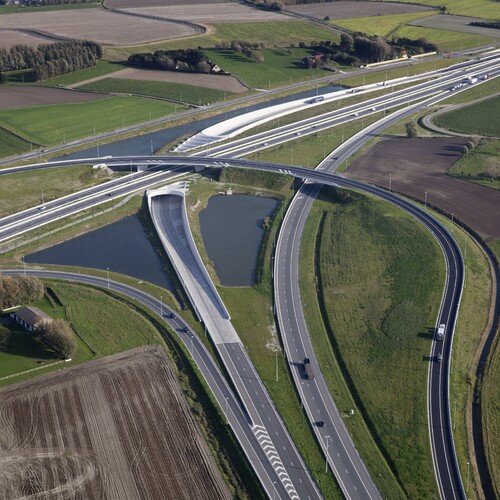
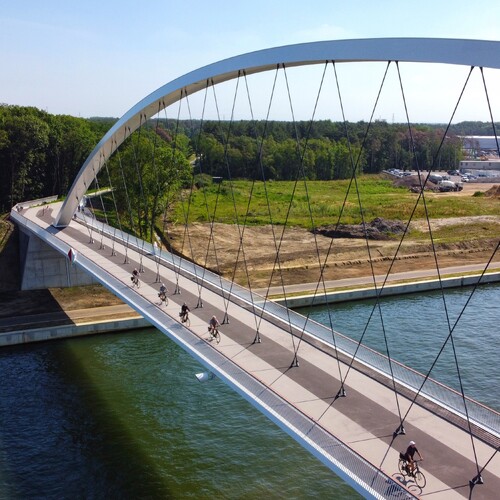
Bicycle bridge, Tessenderlo
A seamless blend of functionality and design
An additional bicycle bridge Cutting through the Flemish landscape near Beringen, just outside the city of Hasselt, the Albert Canal passes…
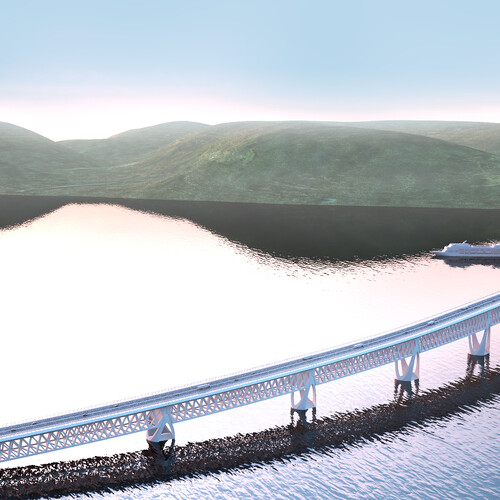
Sognefjord Buoyancy Bridge, Norway
Innovative floating bridge seamlessly integrates with dramatic landscape
Architectural studio ZJA, in collaboration with Iv-Consult and the Technical University Delft developed a design for a spectacular floating…

Road expansion A27/A1
Routing design
Not many people know such a thing even exists, but the motorway A27 (from Breda to Almere) has a routing design described by the Dutch Road…
